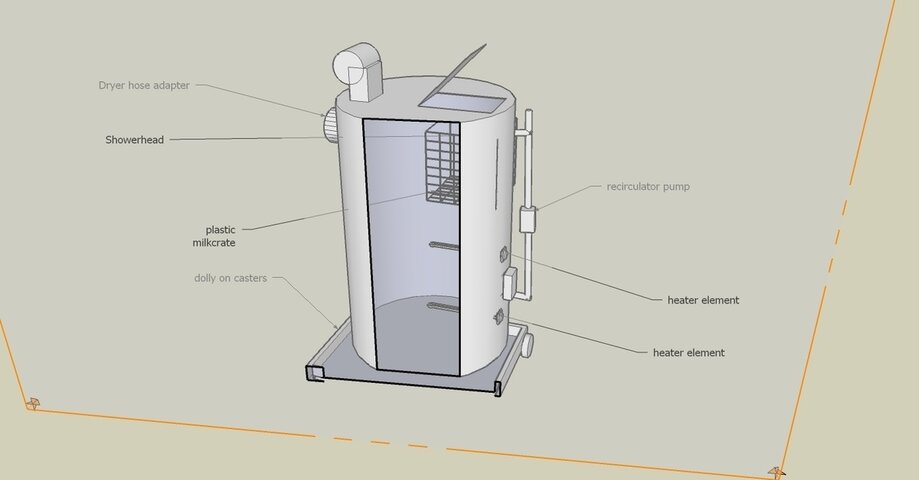Alex, when you did it did you use any dry ice?
We didn't use any Dry Ice
fog in the show at all. I could see possibly using it for Javert's Suicide as it can make a pretty decent looking river, but for the rest of the show it was pretty much just running two hazers almost all the time (just not in the indoors scenes).
Consider this, the original Broadway production of
Les Miserables is the show that spawned the Actors Equity Association (
AEA) to start to look into possible health concerns with the use of chemical
fog and
haze. The original production used more chemical
fog and
haze than any other show to that date. I don't know offhand if/how they used dry ice, but I do know that
AEA does not regulate it's use like chemical
fog (because it stays low to the
ground and you don't breathe it unless you are in it).
On the other
hand, since you are in school, you don't have to worry about
AEA fog and
haze guidelines, so you can run as much
fog and
haze as you want/can afford to. I have a feeling that the most beneficial
effect for your show will be
haze, and I would concentrate your funds/effort on either buying or renting a good
hazer for your show. Not knowing how big your
venue is, it is hard to make a great recommendation, but there are a lot of good machines out there. The
Look Solutions, Unique2 is a great machine and very fluid efficient. The
Le Maitre Radiance is very similar in characteristics to the Unique2. If you have the big bucks or a bigger space you might also consider the
MDG Atmosphere. The Atmosphere requires a CO2 canister, so make sure that you know where you can get it filled if you choose to go this route.
If you NEED the low
fog look, dry ice is a good solution. However, and this may just be my opinion, I think that the show calls more for
haze and
fog than for low
fog.
Dry Ice is fun and building a machine can be fun and educational, however it requires a pretty big skill-set, proper tools, proper supervision (for the non-pros), and proper
safety precautions. Lets just start with the well known tidbit: electricity and water don't mix well. One of the things that really gets brushed under the carpet in all the threads about making dry ice machines is the
safety aspect. We are talking about working with 30-50 gallons of near boiling water, heated by electricity, on a
stage with a dimming
system. We are talking about then putting a dangerous compound capable of giving you near instantaneous frostbite into said water, causing the
release of a dangerous gas. Anyone out there who is building their own dry ice machine, please make sure that you include appropriate fail-safe devices!




